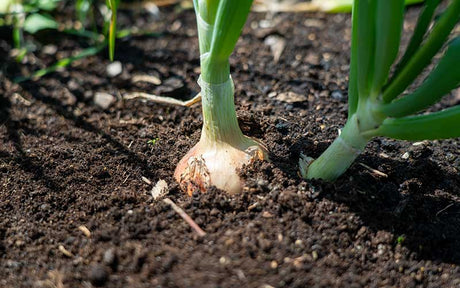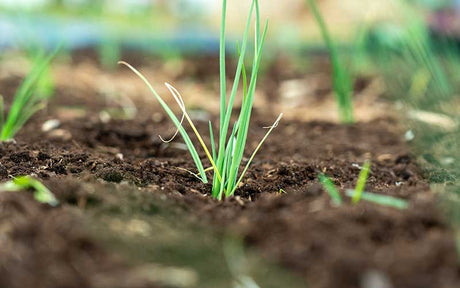Onions and spring onions are cornerstones in culinary dishes worldwide, valued for their versatility and distinct flavors. Growing your own ensures a steady supply of fresh onions right from your garden. Whether you’re cultivating bulbing onions for storage or growing tender spring onions for a quick crop, they will add a splash of flavor to your dishes.
- 1,95Unit price /Unavailable
- 1,95Unit price /Unavailable
Spring Onion Long white Ishikura
1,95Unit price /UnavailableOnion Noordhollandse Bloedrode
1,95Unit price /Unavailable- 2,95Unit price /Unavailable
Grow Onions and Spring Onions for Year-Round Flavor
Optimal Conditions for Growing Onions
Onions are a cool-season crop but require a long growing period and can be planted in early spring or late winter in milder climates. They thrive in well-drained, fertile soil with full sun exposure. Preparing your garden bed with aged compost can improve drainage and nutrient availability, essential for good onion growth.
Sowing Techniques
For traditional onions, plant seeds directly into the soil about 0.5 cm deep, spacing them about 10-15 cm apart. For spring onions, which are quicker to mature and less bulbous, seeds can be sown closer together. Multi-sowing, or planting several seeds in one spot or module, is particularly effective for spring onions. This method allows you to grow clusters of onions together, maximizing your yield from a limited space. Thin these clusters as they grow to prevent overcrowding and promote healthy bulb development.
Watering and Care
Onions require consistent moisture to develop well, especially during the bulb-forming phase. Water regularly to keep the soil evenly moist but not waterlogged. Mulching around the plants can help retain soil moisture and suppress weeds.
Harvesting Onions
Harvest spring onions when they are still young and tender, about 20-30 days after sowing, depending on the variety. For bulbing onions, wait until the tops begin to yellow and fall over, typically in late summer or early autumn. Gently pull and twist the onion out and let it dry on the ground for several days before storing.
Pest and Disease Management
Monitor for common pests such as onion flies and thrips. Diseases like onion blight can be controlled by ensuring adequate spacing and air circulation around the plants. Floating row covers installed at planting can protect onions from flies and thrips. There is also a chance of rust on the leaves. This can be avoided by not getting the leaves wet when watering.
Culinary Uses
Onions are incredibly versatile in cooking, forming the base for countless recipes. They can be used fresh, sautéed, caramelized, or stored for long-term use. Spring onions add a fresh, crisp texture to salads and are excellent grilled or chopped as a garnish.
















